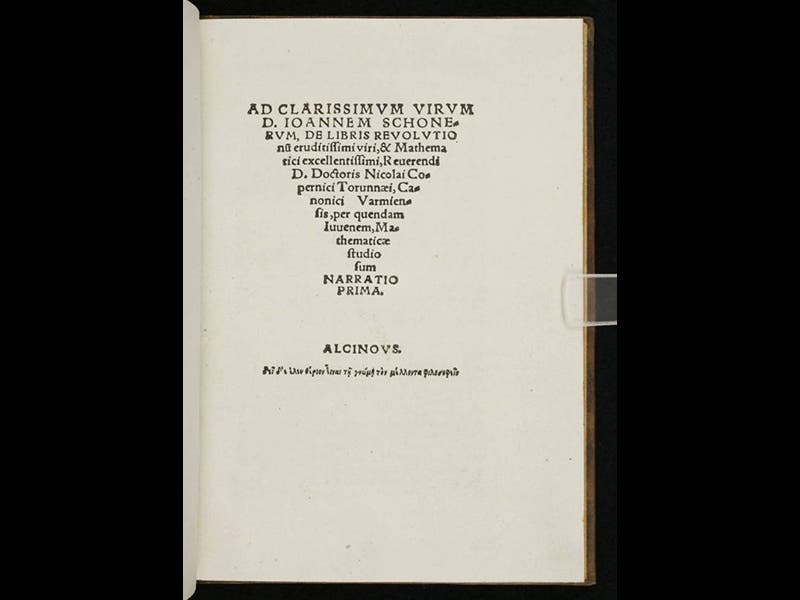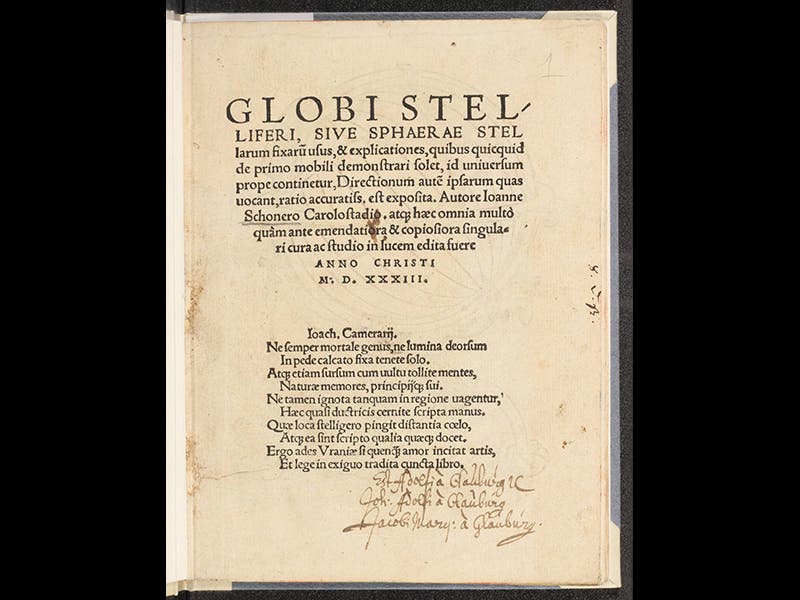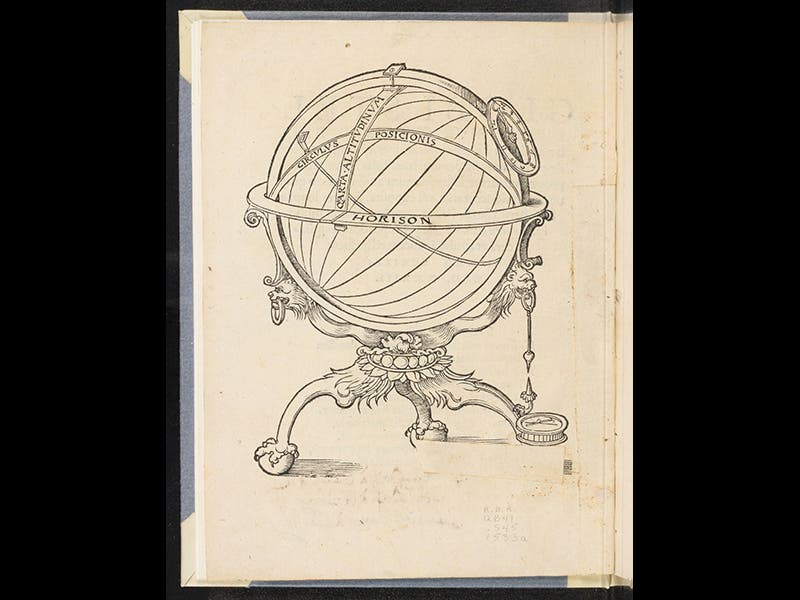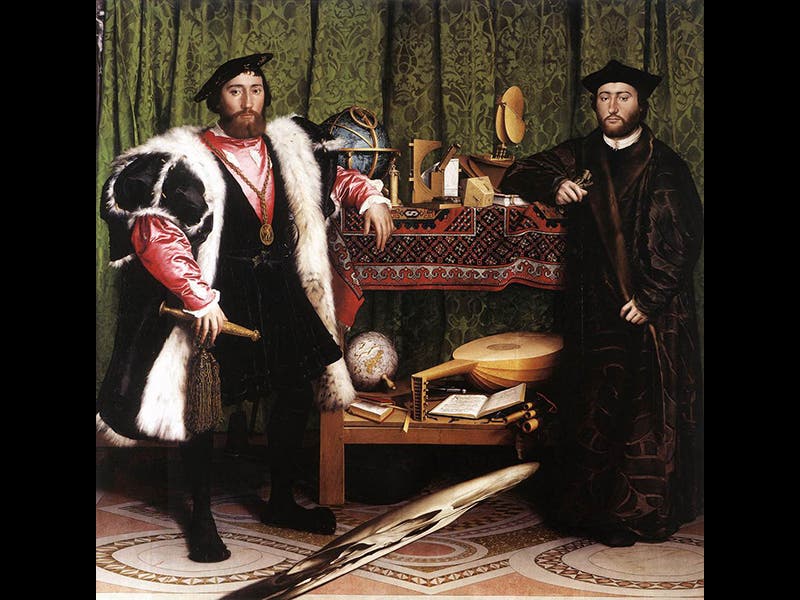Scientist of the Day - Johann Schöner
Johann Schöner, a German astronomer, was born Jan. 16, 1477 (see portrait above, first image). Schöner lived in Nuremberg, the southern German city where the 15th-century astronomer Regiomontanus had lived out his last days and set up the world's first scientific printing press, before his untimely death in 1476. Sometime before 1532, Schöner met another printer in Nuremberg, Johannes Petreius, who was interested in re-establishing a scientific press, and Schöner provided Petreius with a manuscript that became Petreius' first scientific publication. Petreius would eventually publish 11 Schöner titles, several of them being unpublished manuscripts of Regiomontanus that Schöner discovered and edited.
Somewhere along the line, Schöner heard about a Polish astronomer, Nicholas Copernicus, who had developed a novel astronomical system but had published nothing about it. Schöner apparently convinced a young mathematician, Georg Rheticus, to journey up to the Baltic in 1539, to meet the little-known Copernicus and learn what he was up to. Rheticus met Copernicus and immediately wrote and published a Narratio prima (First account) of the Copernican system in 1540, in the form of a letter to Schöner, which is why we think Schöner gave him the idea in the first place (second image above). Two years later, Rheticus returned to Nuremberg with the manuscript of a much longer work by Copernicus, which he turned over to Petreius, who published it as De revolutionibus orbium coelestium in 1543. It is probably the most important astronomical book ever printed, and Schöner was in a sense its midwife.
Schoner also designed a celestial globe, and published a short book about globes, which we have in our collection (third image above). The woodcut in the book is very simple, without constellations (fourth image above), but the actual globe he produced is a thing of beauty; the fifth illustration above shows the one in the collection of the Royal Astronomical Society in London. The globe made a famous appearance in Hans Holbein’s The Ambassadors (1533), painted the same year as our book was printed, and now hanging in the National Gallery in London (sixth image above).
Dr. William B. Ashworth, Jr., Consultant for the History of Science, Linda Hall Library and Associate Professor, Department of History, University of Missouri-Kansas City









![“Aurora Borealis,” hand-colored wood engraving by Josiah Wood Whymper, [Natural Phenomena], plate 2, 1846 (Linda Hall Library)](https://assets-us-01.kc-usercontent.com:443/9dd25524-761a-000d-d79f-86a5086d4774/0245ffcb-b70c-477c-8792-0a73ebd54eb2/Whymper%2011.jpg?w=210&h=210&auto=format&fit=crop)


